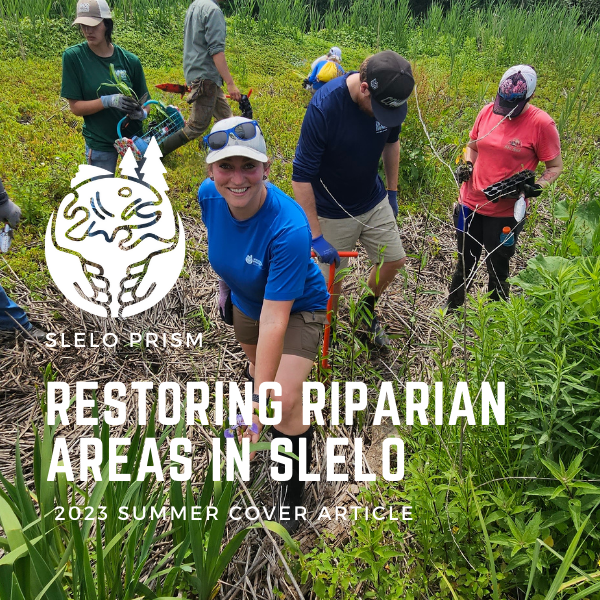This article was featured in the 2023 summer newsletter by Brittney Rogers-SLELO PRISM.
As many are aware, we have completed three phases of a restoration project at South Sandy Creek in Lakeview WMA. This has included an initial assessment, management of invasives, monitoring, and in 2023, restoration. Our goal for this project is to suppress the growing monocultures of invasive species occurring within riparian areas, which included invasive knotweed, phragmites, and goutweed. Another objective is to recover native biodiversity to increase the resilience of the ecosystem to external stressors and our changing climate.
Beginning June 23rd, 45 people contributed to over 650 total person hours, 25% of which were volunteer hours. Where 6,272 plants were placed in the ground throughout the riparian areas of South Sandy Creek spanning over nearly 30 acres within the Lakeview WMA. Volunteers and staff endured rainy hot weather, and worked hard to install the plants over the course of just five days!



















Since the start of management at this site, we have been able to treat nearly 4 acres of invasive species. Following these efforts, we have been working to re-establish native species in the riparian areas with many additional goals including:
Supporting Wildlife – planting specialized native plants supports pollinator species like the monarch butterfly, selecting species that provide an abundance of food for wildlife, so we selected oaks and willows, sedges, and bur reeds.
Sequestering Carbon – Based on the iTree tools, we are estimating that in 30 years these plants, at 50% mortality, should sequester over 400,000 pounds of CO2.
Improving Water Quality – Planting native species in riparian areas will allow for reduced runoff and improved stability of banks, reducing the impact of invasive knotweed leaf litter in the creek as well.
Improving Aesthetic Value – Although not our first priority, by conducting this work we are providing many locals and tourists alike with an improved quality of paddle along SSC.
Following these efforts, our goal is to continue the management and suppression of the remaining invasive knotweed and phragmites at the sites in addition to long-term plans to continue native and invasive species monitoring at the site.


